Galmpton Catchment (2024)
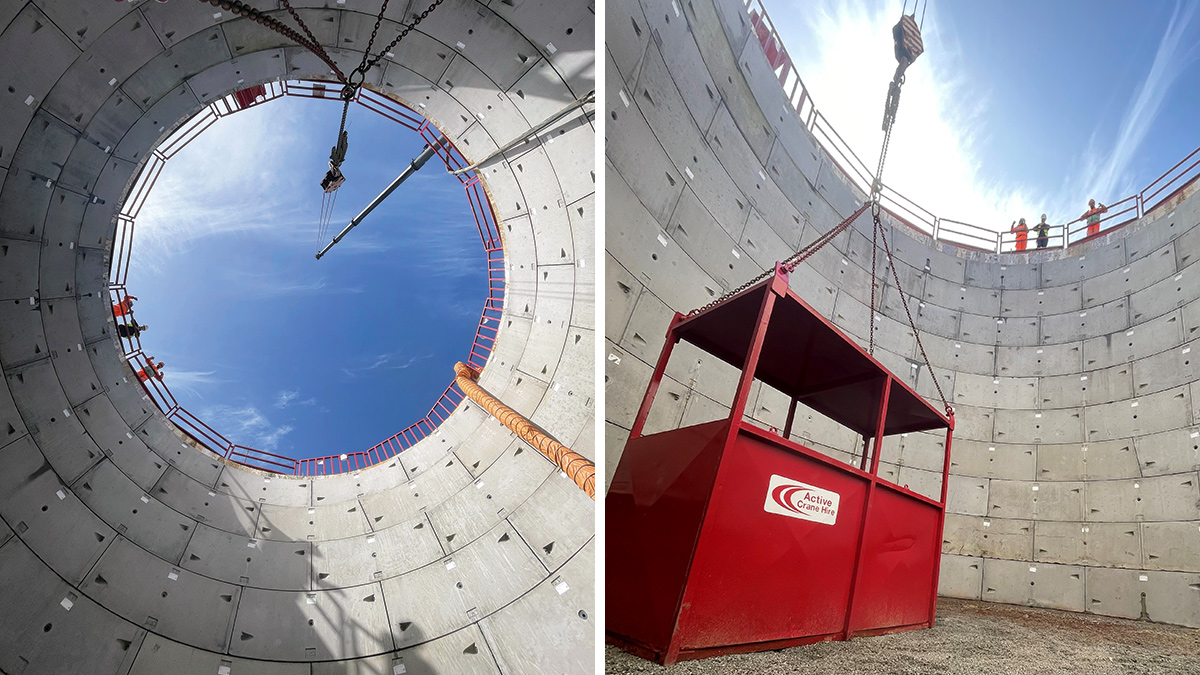
Inside the Galmpton stormwater storage tank - Courtesy of Galliford Try
Located in south Devon, Galmpton STW treats foul water for the hamlet of Galmpton and the surrounding catchment, including the coastal village of Hope Cove (Inner Hope Cove and Outer Hove Cove) about 1km away. As is typical with several coastal hamlets and villages in the West Country, the catchment regularly deals with significant rain events that run the risk of potentially overwhelming the outlying pumping stations; resulting in spills that may have a detrimental effect on the bathing water quality. The Hope Cove area is no different and Galliford Try was selected to support a multi-disciplined multi-contractor strategy to ensure that the local bathing waters, which are extremely important to locals and tourists alike, were protected despite increased numbers of storm events now and into the future.
Location
The South Devon catchment comprises of a small inland hamlet, Galmpton, and two larger villages, Inner Hope and Outer Hope, which are joined together along the shore at Hope Cove. Hope Cove consists of two sandy bays, also named Inner and Outer Hope. As the name suggests, Inner Hope is more sheltered and is home to a small harbour tucked away behind the rocks at the northern end.
The northernmost beach is generally the more popular of the two, benefitting from a seasonal lifeguard service. Both beaches are sandy and backed by the red sandstone cliffs familiar to this part of Devon.
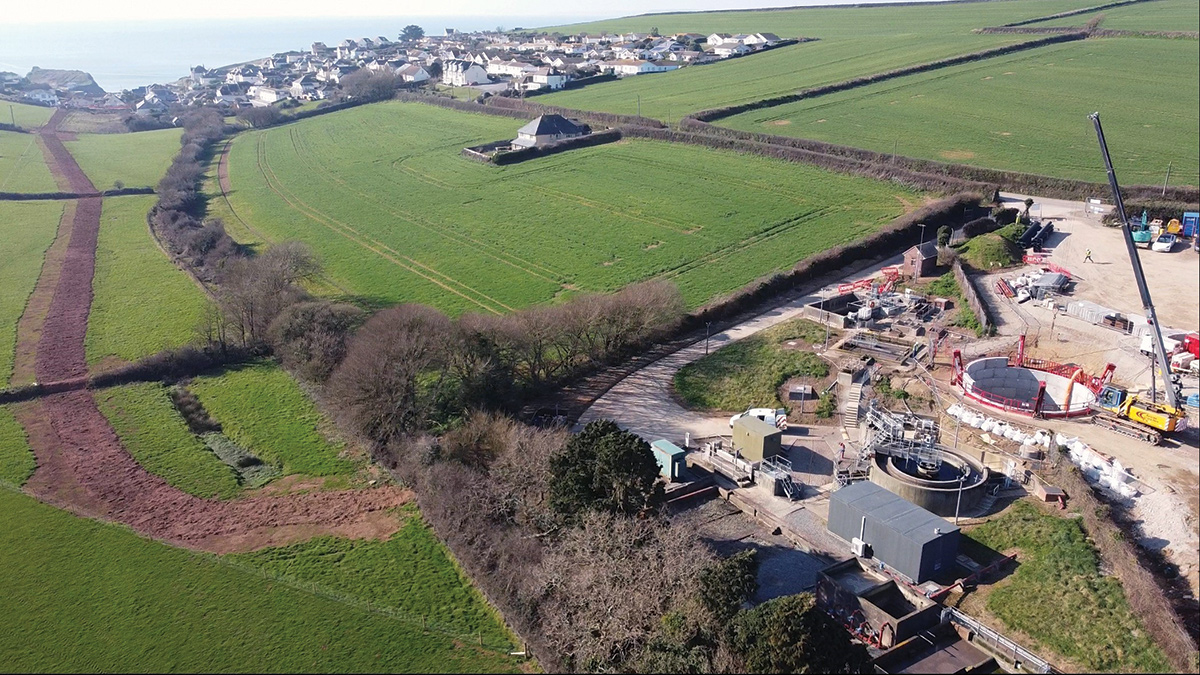
Aerial shot showing Galmpton STW on the right and rising main scar through the fields on the left – Courtesy of Galliford Try
Project strategy
The intention was simply to enhance the system, enabling more combined flows to be sent to the works, protecting storage in the network for longer, and preventing spills. The strategy was to be a combination of surface water separation, which removes rainwater (collected by impervious areas such as roads, driveways and roofs) from the sewer network and delivered by infrastructure partners Glanville Environmental, enhanced upgraded pumping stations, a new rising main and additional stormwater storage at the works, allowing for treatment through the unaltered works once the storm event had subsided.
Objective
To meet the Water Industry National Environment Programme (WINEP) for Bathing Waters in North Devon driver, which was for Galmpton STW to have an average of no more than two spills per bathing season greater than 50m3 in aggregation with Outer Hope Pumping Station, Galmpton Hope Cove STW SSO and Inner Hope Pumping Station CSO/EO.
Scope of works
The Galmpton STW Bathing Waters Project was awarded to Galliford Try who undertook the following:
- Significant enhancements to Outer Hope Cove Pumping Station: Following a catchment model study, it was decided that the significant enhancements to the Outer Hope Cove Pumping Station, required for the overall scheme, would gain an early benefit as the pre-construction phase was being completed for the more complex elements of the strategy.
- New rising main from Outer Hope Cove to Galmpton: Following the successful increase in flows to the works and away from the shoreline, Galliford Try installed a new 180mm diameter PE rising main. The 1km long pipeline from Outer Hope Cove SPS to Galmpton STW threaded through and under the historical fishing village and across farmland, outside of the tourist season.
- New 700m3 of below-ground stormwater storage: Galmpton STW had stormwater storage tank with pumped return which needed to be replaced. Above-ground tanks were discounted in favour of a below-ground shaft given the natural beauty and sensitive nature of the location. In parallel with the rising mains works, Galliford Try installed a below-ground shaft storage tank at the sewage treatment works fitted with tank cleaning flushing bell and storm return pumps.
- New mechanical screening: A new MecMex screen was installed on the inlet flow balancing tank to ensure all flow to the new tank and overflow were screened to 6mm.
- Inner Hope Cove Pumping Station upgrade.
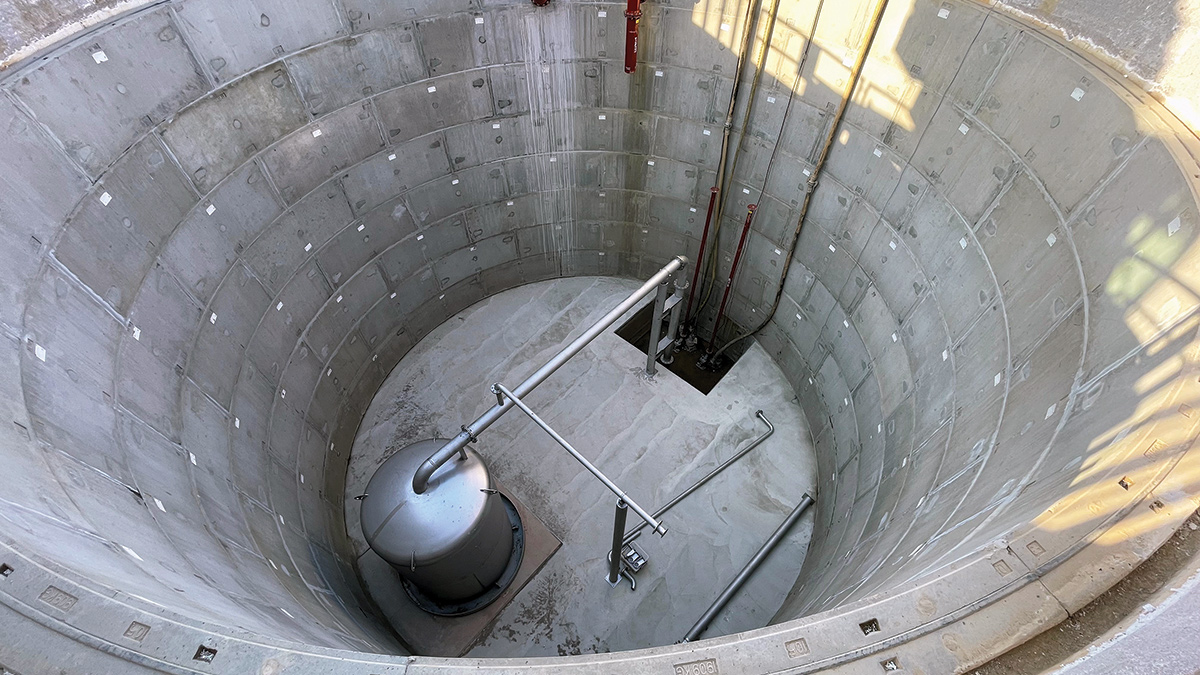
Galmpton stormwater storage tank following the installation of the flushing bell and air valve release pipework – Courtesy of
Programme
Work started in September 2022 with the set up compound located in field adjacent to Galmpton STW. In October 2022 Galliford Try started on the rising main up through the Rossiter Estate. By January 2023 Galliford Try started the rising main works through Outer Hope Cove village, which was completed by mid-March 2023.
Active Tunnelling started work on the 12m diameter, 11m deep shaft on 2 February 2023, and the shaft base and pump sump with temporary return pumps were completed on 31 March. The shaft roof was installed on 20 April, and permanent pumps and MEICA completed in May. By June 2023, Inner Hope PS had been upgraded and Galmpton STW was reinstated and handed back to South West Water.
Galmpton Catchment: Supply chain – key participants
- Principal designer & contractor: Galliford Try
- Civils design: Pell Frischmann
- PCC shaft design & construct: Active Tunnelling Ltd
- Surface water separation: Glanville Environmental
- Site investigation/ground surveys: AGS Ground Solutions
- Traffic management: Amberon Ltd
- Installation of rising main: AT Group (SW) Ltd
- Rising main pipe: Burdens
- Precast concrete shaft segments & roof beams: FP McCann
- MecMex screen, flushing bell & pipework: Eliquo Hydrok Ltd
- Pumps: Pump supplies Ltd
- Storm tank return pumps: Xylem Water Solutions
- Tarmac reinstatement works: Walton Civil Engineering & Surfacing Contractors
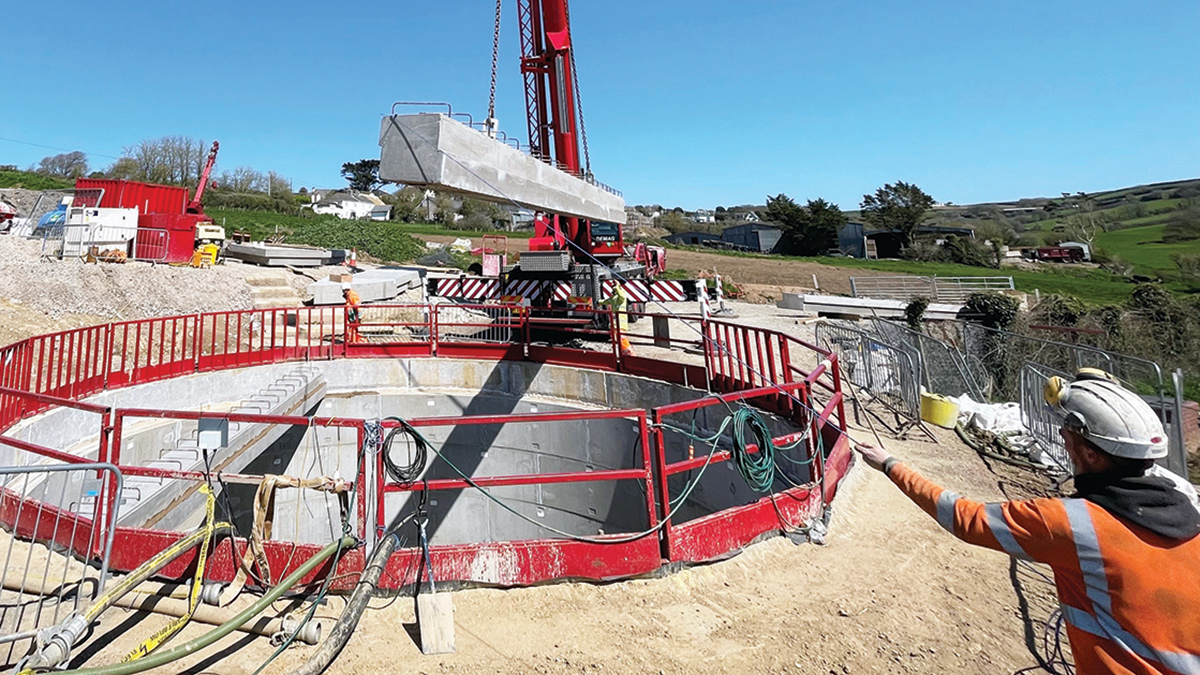
Storm tank roof installation main beam lift – Courtesy of Galliford Try
Social local economic value
The project design showed this scheme would reduce stormwater spills to under two per bathing water season. All stormwater spills would also now be settled and screened, meaning that the two beaches at Inner Hope and Outer Hope should experience less spills, and a much higher quality of water, both now and into the future given the weather modelling horizon of several decades.
In the summer months these beaches are very popular with tourists and used continually through the winter by local surfers and cold-water swimmers.
Risk management
The biggest risk was being able to get all the large plant and equipment required to construct such a large below ground tank onto the very remote site. There were many tiny lanes and poor access routes roads. Galliford Try often planned the large plant movements over night while marshalling the lanes. During the rising main installation, Galliford Try had to lay the new main up an existing road which was only wide enough for one car width. With agreement from the local traffic management officer, we had to run a give and take arrangement with an escort.
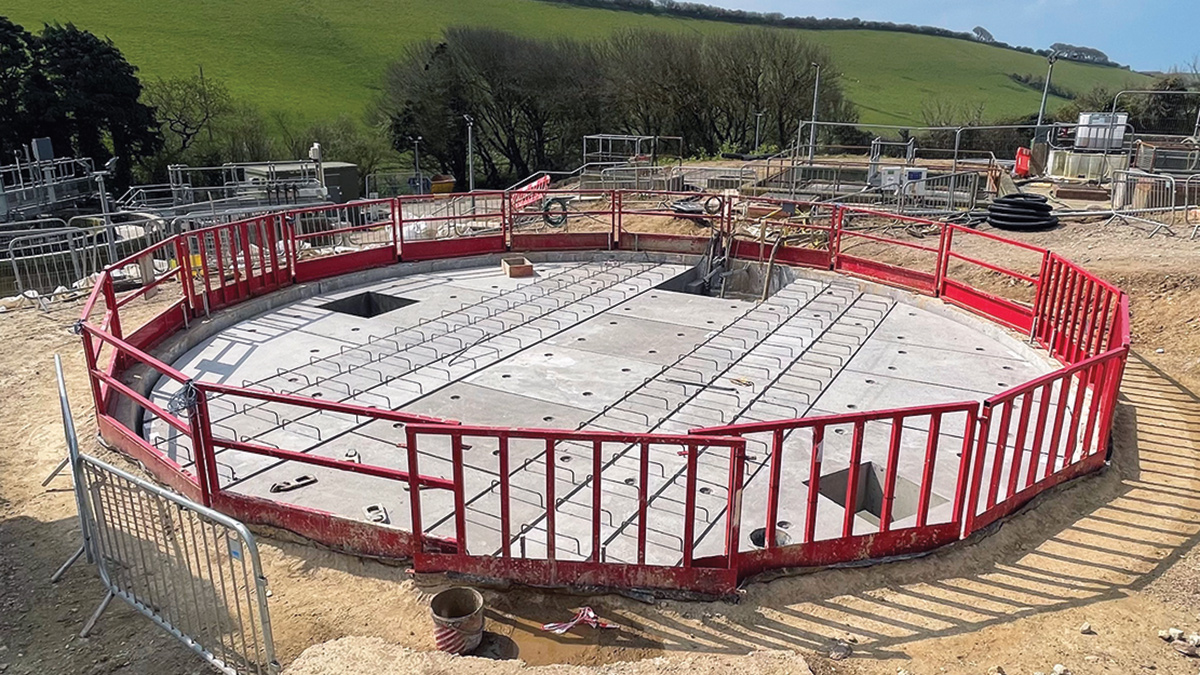
Galmpton storm tank with the precast concrete roof installed – Courtesy of Galliford Try
Stakeholder management
There were a number of local residents very interested in the project which Galliford Try’s Client Liaison Officer managed by a forum and weekly updates, our rising main works did impact a number of properties and restrict access. Galliford Try regularly informed and talked to the landowners and residents on a daily basis to ensure they were happy. The scheme did receive a number of emails from local residents concerned about the works and how they would be impacted, again Galliford Try’s project team dealt with all the issues through the forum and talking with the people involved.
Carbon savings
There were significant carbon savings on this project. With agreement from Rossiter Estate, all spoil from the shaft was used to re-profile part of the adjacent field removing undulations against the South West Water boundary. This removed all muck away (90-100 muck wagons) with the additional benefit of significantly reducing traffic through the village.
Conclusion
Galliford Try’s project team managed to get a temporary system up and running before 31 March 2023, ensuring another regulatory compliance date was achieved for the client and the main scheme was handed over to South West Water in June 2023 in line with contract programme.
The Harbour Master at Outer Hope said:
“I have noticed a huge improvement in water quality in the coves and on the beach, which was already of a high standard”.
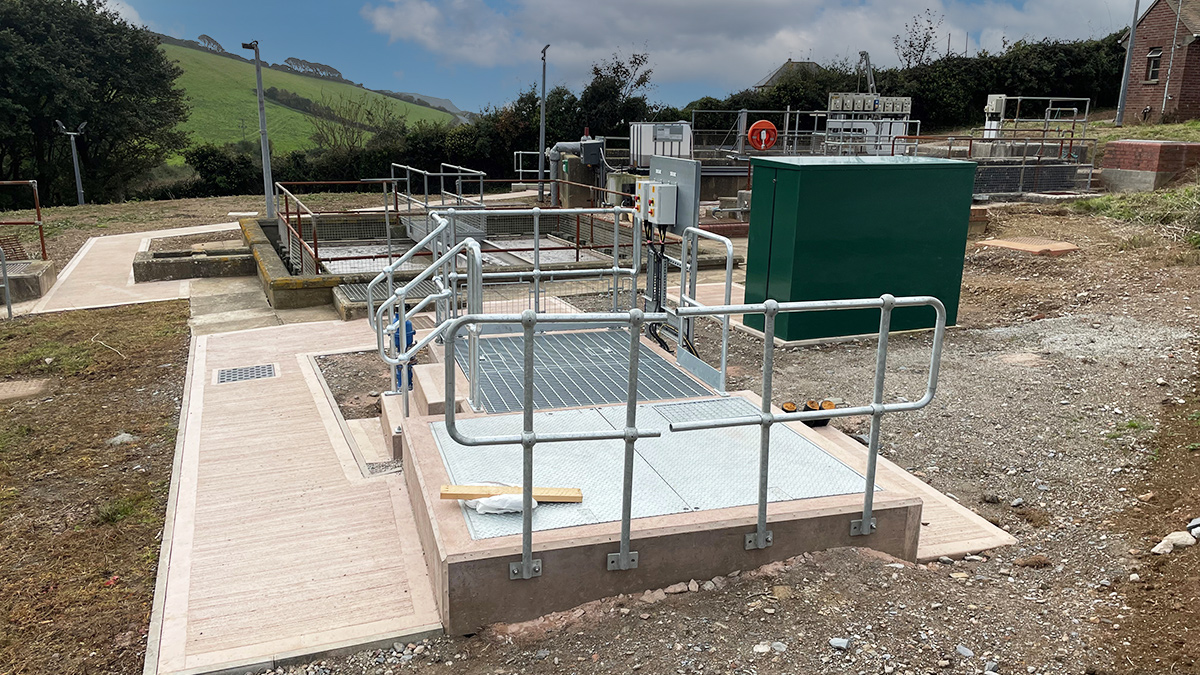
Galmpton STW following reinstatement of new storm tank access - Courtesy of Galliford Try







